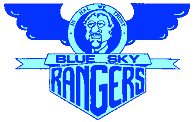BurgerTime

ATARI 2600 CARTRIDGE [#4518]
Release 1983
Based on the Data East arcade game
Program: Ron Surratt
Sound Effects/Music: Patricia Lewis Du Long

DEVELOPMENT HISTORY
BurgerTime was a priority for the Marketing department. After losing out on the best arcade licenses to Atari and Coleco, Mattel Electronics made a deal with Data East USA to put their arcade games onto Intellivision. Data East had limited distribution in the United States, so none of the games Mattel Electronics obtained were very well known. But BurgerTime was so good that Bally/Midway, the largest arcade game distributor, licensed the title from Data East. Soon BurgerTime was in arcades everywhere. Mattel had accidentally acquired a hit.
Not wanting this to go to waste, Marketing decreed that BurgerTime would appear on every platform Mattel supported: Intellivision, Atari 2600, Colecovision, IBM PC, Apple II, Aquarius and handheld.
Ron Surratt, manager of Atari 2600 programming, inspected the game and came to a conclusion: it couldn't be done on Atari. Marketing asked what additional programming resources would be required. None, Ron replied, it can't be done. What hardware modifications needed to be made to the cartridge? You're not getting it, Ron said, it can't be done. No, Marketing came back, you're not getting it: BurgerTime WILL be released for Atari.
Ron set about programming the game. A hardware scheme to give him more memory to work with was devised (see Comments), but complicating matters was that the game was not allowed to flicker.
A hardware restriction of the Atari 2600 is that when too many moving characters - sprites - are in a row on-screen, they begin to flicker. In the original M Network games, APh Technology Consulting did a great job of orchestrating sprite movements to minimize this flicker - far better than Atari had in their own original releases. Marketing had jumped on this, pointing to the lack of flicker as proof of M Network superiority. Of course, this meant that all new games had to meet the standard of the early ones: no - or very little - flicker.
Unfortunately, the highest scoring move in the game, dropping all of the bad guys - nasties - at one time, requires that they all be in a row. So how could he keep a row of sprites from flickering? Ron used something of a cheat: a regular sprite's look is defined by the programmer, but there is also a special sprite - a missile - defined by the hardware. A missile is simply a rectangle intended, as its name implies, to be used as the graphic for a projectile. The programmer cannot change its shape, only its color and width. Despite its graphical limitations, missiles do have one advantage: they don't flicker when in a row with other sprites. So Ron made a square missile orange and called it a slice of cheese, made another square white and called it an egg, and made a thin missile brown and called it a bread stick. Voila: no flickering.
Some fans of BurgerTime were disappointed to find that the chef was being chased around the maze by colored squares and sticks, but most were happy that the gameplay was quite faithful to the original arcade version and to Intellivision BurgerTime.
A PAL version was also produced by Dave Akers for international release.






